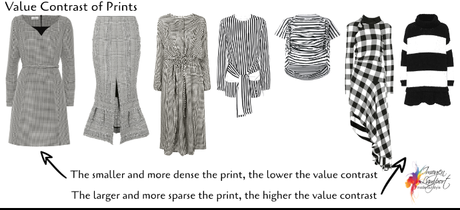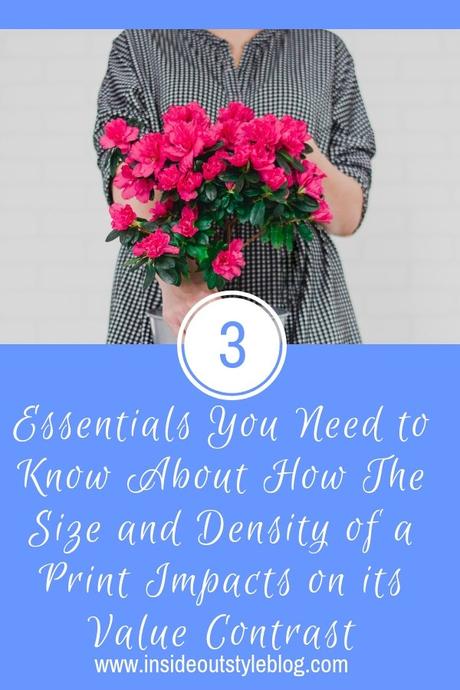I am a big fan of your contrast series. I had never known about this concept before, and often kept myself wondering why some particular outfit felt off to me - but couldn't quite put my finger on it. It all really boiled down to contrast levels! I am amazed that so few style experts ever mention value and colour contrast, and I can't thank you enough for sharing your knowledge with us all.
However, as much as I learned from your wonderful and informative blog and videos, I still keep wondering if a white and black or white and navy pattern, for example, is always high contrast. Do you take into account only the intensity of individual colours or do the density and size of the particular elements of a pattern influence its value contrast as well? I would greatly appreciate it if you could mention this on your blog, as I'm sure patterns are the most tricky part of the entire concept for many of your readers. Many thanks in advance!
Great question as both size of print and density of print influence how high or low the contrast of the print looks.
Size of the Print and the Impact on Value Contrast
Firstly, let's look at the size of the print. What I've observed is that the size of the print does impact on its apparent value contrast. What you can see below with these polka dot print dresses, is that on the left, the smaller dots are less apparent than the larger dots. The scale of the print does impact upon the value contrast.

2. Background Colour of the Print
Secondly, what you may also notice with the above examples, is that the background colour also impacts on the apparent value contrast, when the scale of the print is small (examples on left). The white dots on the black background stand out and are more obvious, creating more value contrast, than the white background with the black dots. This is because light colours advance and dark colours recede. So when the background is receding (dark) the light pattern jumps forward and is more apparent. So a light background with a dark print appears more medium value contrast, whilst the dark background with light print is more medium-high value contrast (rather than a true high-value contrast).
3. Density of the Print or Pattern
Now, take into consideration the density of the print or pattern. The smaller and denser the print or pattern is, the lower the value contrast becomes, this is because our eyes start to blend both colours together, creating a colour that falls in between the actual colours used.

So there you have it! If you've not naturally got a high-value contrast, but want to wear a high-value contrast print - look for small-scale prints and more dense prints which will appear lower in contrast.
More Tips on Finding Your Contrast
How to Find Your Ultimate Colour Contrast - Your Three Step Process
Getting Your Head Around Value and Contrast - the Celebrity Version
Where Celebrities Go Right and Wrong with Their Contrast
11 Real Life Examples of Dressing to Your Contrast
7 Important Factors for Working with Contrast
The Value of Value Contrast and Using it to Create Stunning Outfits



